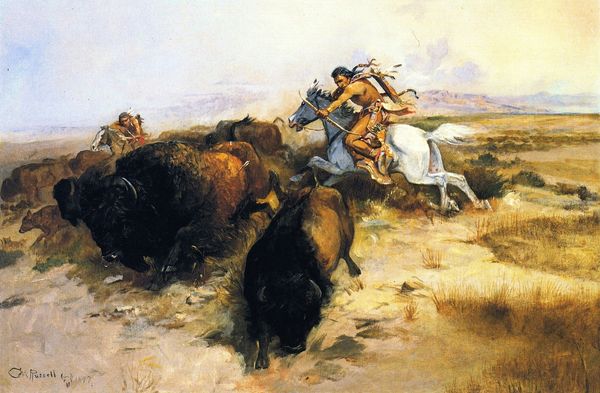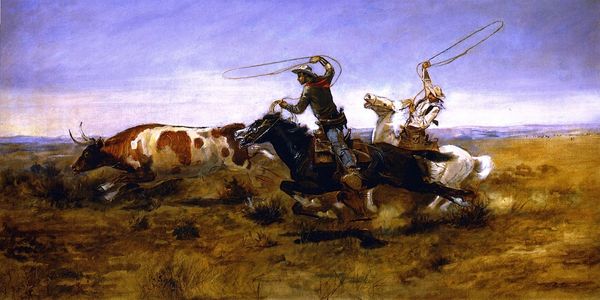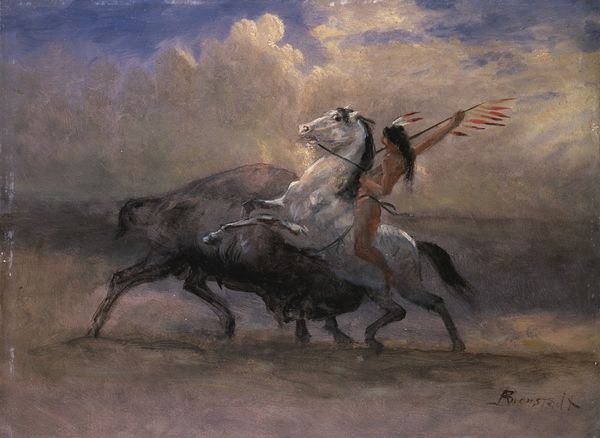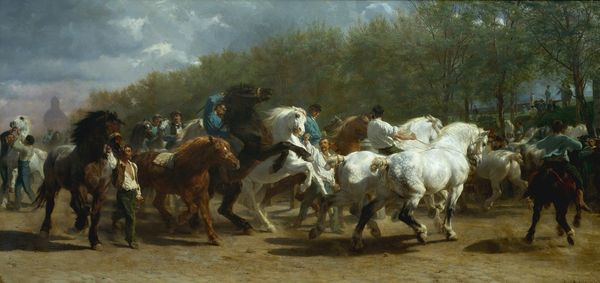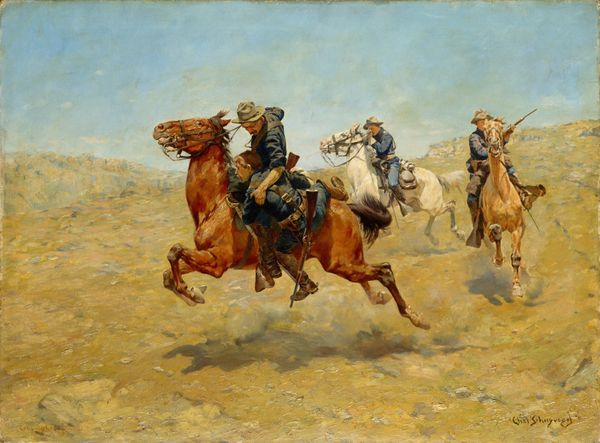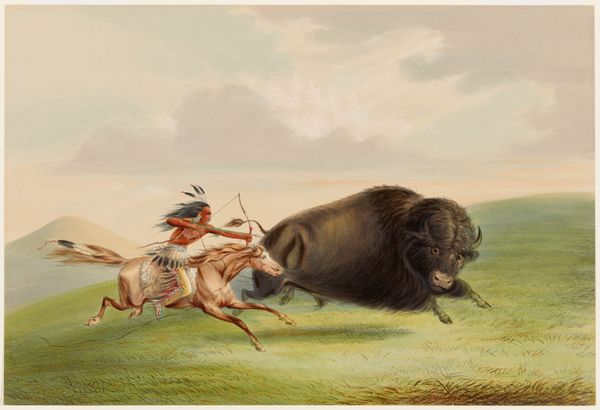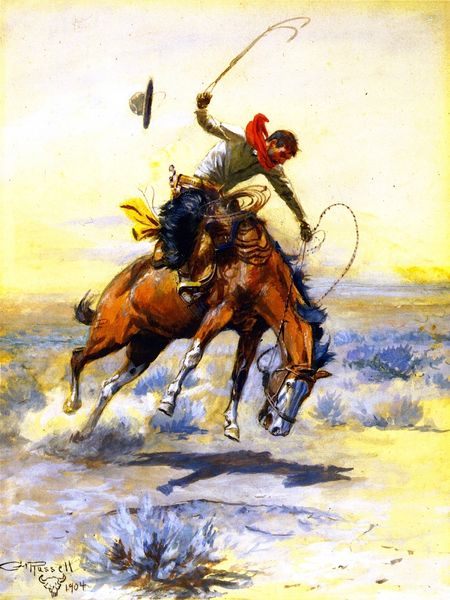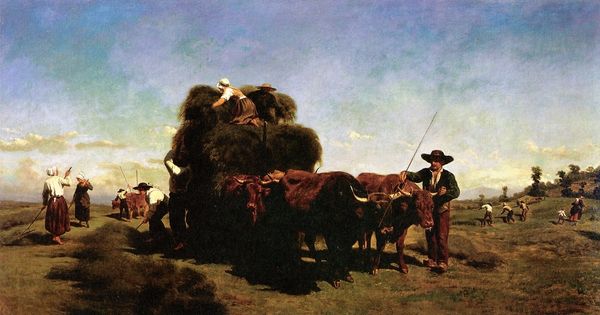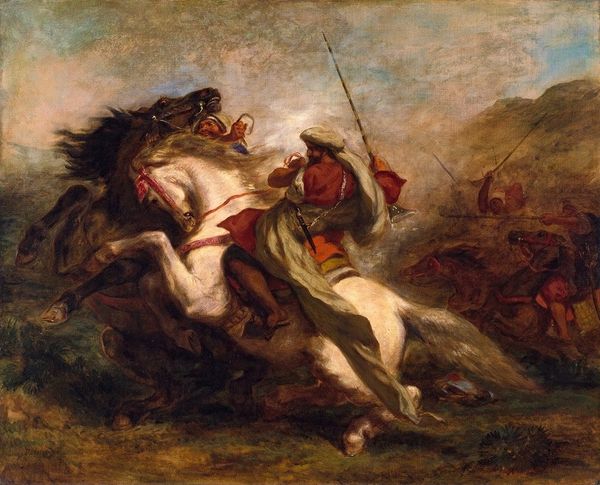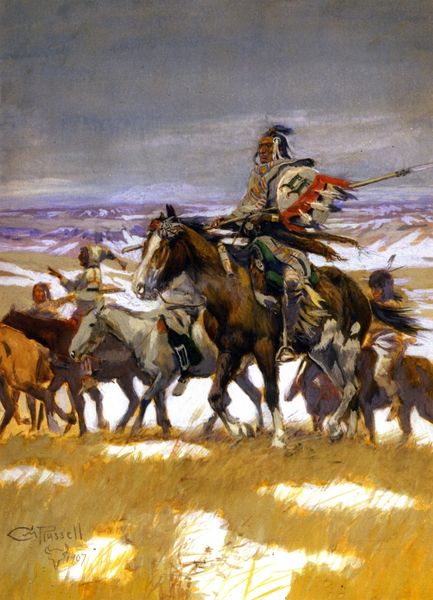
oil-paint
#
oil-paint
#
landscape
#
figuration
#
oil painting
#
romanticism
#
animal portrait
Copyright: Public domain
Editor: Here we have Albert Bierstadt’s oil painting, "The Last of the Buffalo II." It's difficult to pinpoint the exact date, but looking at it, I'm struck by the dramatic tension and almost theatrical composition, what is your take? Curator: Formally speaking, observe how Bierstadt orchestrates this encounter with opposing diagonals—the spear-wielding rider countered by the muscular thrust of the buffalo. The dynamism is further emphasized by the limited palette; earth tones juxtaposed with the white of the horse, intensifying the inherent drama of the conflict. Editor: That's a great point about the limited palette adding to the drama. I had only seen a literal reading so far! The composition seems a bit unbalanced, almost chaotic. Is that intentional, or perhaps a flaw? Curator: The seeming imbalance, viewed formally, contributes significantly. Note how the implied lines converge toward the upper-left quadrant, generating a sense of impending doom. Ask yourself, does this lack of equilibrium not then enhance the narrative of loss and struggle implicit in the work's title? Editor: I see what you mean. Now that you point it out, that upper-left corner becomes really important. It’s not just empty space, it contributes to the painting's overall meaning. Curator: Precisely. Formal elements here, such as the painterly brushstrokes evident in the animal's fur and the atmospheric perspective that blurs the background, work synergistically to construct a meditation on both the visible scene, and, implicitly, the vanishing West. Editor: So, by examining Bierstadt's technique and composition, we can begin to decode a story not immediately apparent on the surface? Curator: Precisely! It's in the formal arrangement that we discover the artist's most powerful statements. Editor: Thanks, this approach is quite an eye-opener, especially with how the artist used structure, balance, and color to deepen the narrative! Curator: A valuable exercise, underscoring the critical role of visual analysis in interpreting works such as this.
Comments
No comments
Be the first to comment and join the conversation on the ultimate creative platform.


